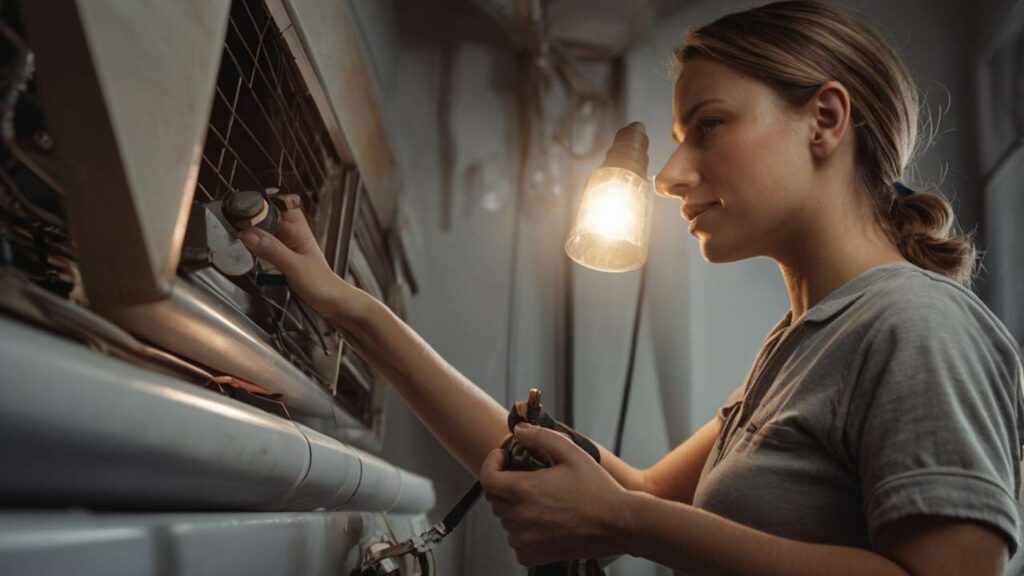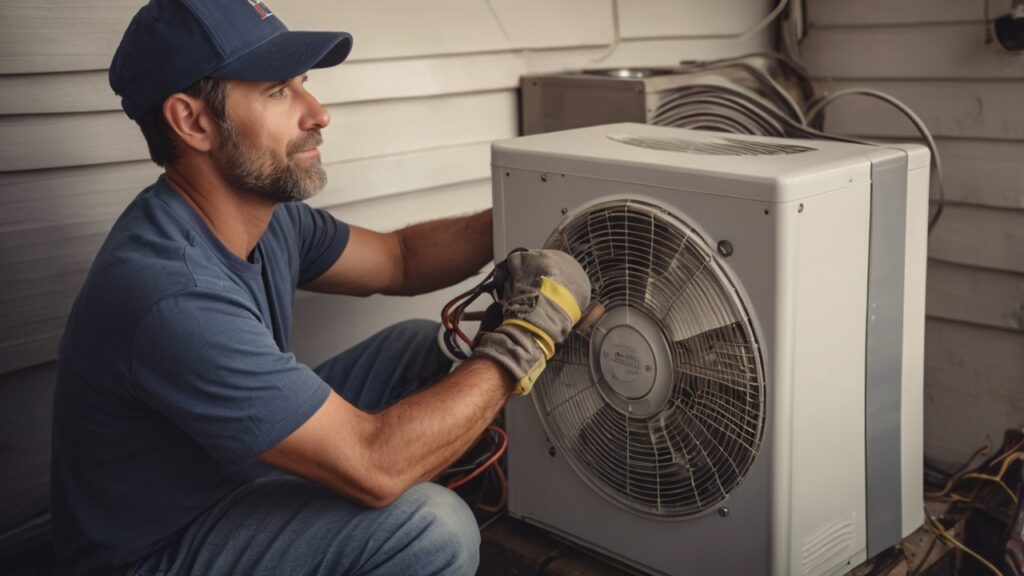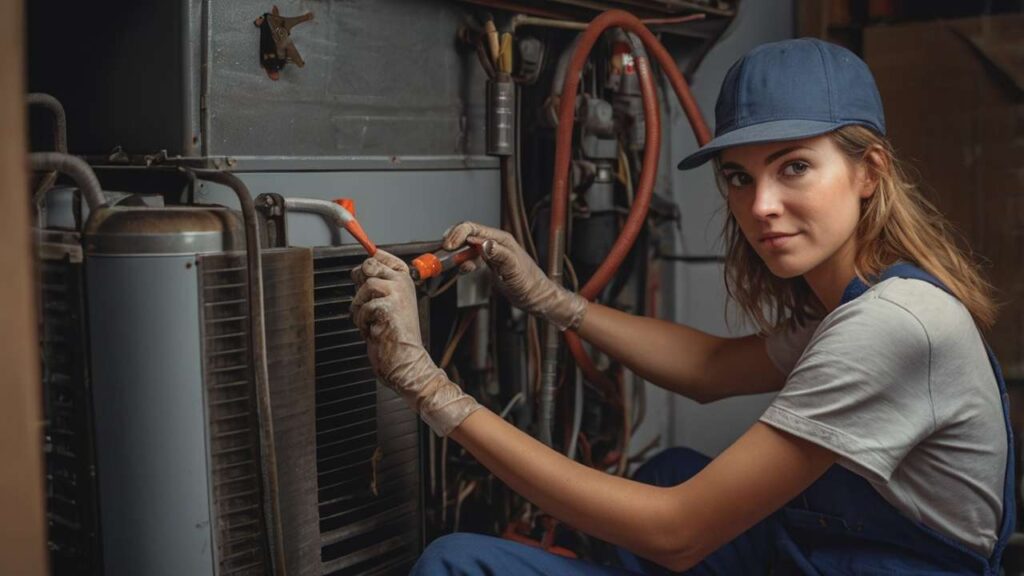Indoor air quality is one of those hidden issues that people rarely talk about until it becomes a serious problem. Dust, mold spores, pet dander, and even volatile organic compounds (VOCs) float around in almost every home. For many families, an HVAC system isn’t just about temperature control—it’s the frontline defense against airborne pollutants. I’ve seen homes where the air felt fresher than outside, and I’ve also stepped into living rooms where every breath felt heavy. The difference usually comes down to how well the HVAC system is maintained and whether it’s being used for air purification as well as heating or cooling.
Some homeowners still wonder how to remove VOC from indoor air or whether an HVAC air purification setup can really make a difference. Let me tell you, it can—if it’s done right. But skipping the details, ignoring filters, or treating your HVAC as a one-switch solution often leads to disappointment. Improving indoor air quality is possible, and it’s not as complicated as some “experts” make it sound, though it does take consistent effort and the right tools.
The Hidden Dangers of Poor Indoor Air
Indoor air pollution doesn’t look scary. That’s the problem. You can’t always see the VOCs released from cleaning products or building materials. You won’t always notice the tiny particles coming from your gas stove. But your body notices—headaches, allergies, irritated eyes, even fatigue can all be connected to indoor air quality.
In one case I read, a family in Raleigh noticed their youngest child’s asthma worsening. Doctors kept prescribing medications, but the real solution came after an HVAC technician suggested installing HEPA filters for home use. Within weeks, the child’s symptoms eased. It’s not magic, it’s simply the power of filtration and a bit of professional know-how.
Experts like Dr. James Sublett, a board-certified allergist, often stress that “airborne pollutants indoors can be two to five times higher than outdoors.” That’s a statistic that shocks many homeowners but also motivates them to act.
How HVAC Systems Influence Air Quality
The link between HVAC systems and indoor air quality is pretty straightforward: every time the fan kicks on, air is circulated. That means pollutants are either trapped (if your filtration is good) or spread around (if it’s not). HVAC air purification goes beyond a basic filter. It’s about creating a reliable, trusted system that consistently reduces airborne pollutants.
- Air Filtration Systems: A standard filter may catch dust, but a high-MERV or HEPA filter can target smaller particles.
- Air Purifier vs HVAC Filter: Standalone purifiers help in single rooms, but an HVAC filter protects the whole home.
- Allergy Relief HVAC: Specialized filters and add-ons like UV light systems can bring real relief to sensitive individuals.
I personally upgraded my own unit last year with a mid-range HEPA filter. At first, I thought it was hype. But cleaning day showed otherwise—the dust build-up in my house cut down by half, and my morning sneezes? Almost gone.
Practical Solutions for Healthier Indoor Air
So, how do you improve indoor air quality without falling into marketing traps? Here’s what a professional HVAC contractor would actually suggest:
- Upgrade Your Filters
Don’t cheap out on filters. A trusted technician will always recommend HEPA or at least MERV-13 filters if your system can handle it. - Use an Air Quality Monitor
These small devices tell you the VOC levels, humidity, and particulate matter in your home. It’s like having a dashboard for your lungs. - Regular Preventive Maintenance
A dusty coil or clogged drain line doesn’t just hurt efficiency, it adds to airborne pollutants. If you haven’t read The Ultimate Guide to HVAC Preventive Maintenance (link), it’s a must. - Consider Add-Ons
UV lamps, whole-home humidifiers, and carbon filters all target specific air quality issues. Carbon filters, in particular, are excellent for VOC removal. - Seal Leaks and Clean Ducts
If your ducts are pulling in attic dust or garage fumes, even the best filters won’t save you.
I’ve seen neighbors waste hundreds on “miracle” plug-in purifiers while ignoring their HVAC filters. Don’t make that mistake.
The Repair Side of Things
Sometimes, the issue isn’t lack of tools but neglect of repairs. A blower fan running off balance can throw dust through every vent. A cracked heat exchanger may leak gases that no filter can remove. Reliable HVAC technicians often carry small but critical tools like coil brushes, refrigerant gauges, and inspection cameras to catch these problems before they spiral.
One trusted repair process I’ve observed involves checking the system with a smoke pencil to spot leaks, then using UV dye to track refrigerant issues. These aren’t gimmicks—they’re professional methods that keep your system safe and your indoor air breathable.
A Real Case Study
A couple in Charlotte had been battling allergy issues for years. They tried sprays, cleaners, even daily vacuuming. Finally, an HVAC company recommended installing a central air purification system with carbon filters plus duct cleaning. The results? Their allergy relief was almost immediate. The husband, who used to wake up with a sore throat, told the technician, “It feels like our house can finally breathe again.”
This is the kind of social proof people need. It shows that the right steps, with expert guidance, can bring lasting change.
Linking Back to the Bigger Picture
This post is just one piece of a larger conversation. For readers who want to explore more, check out:
And don’t miss related guides we’ve developed:
- Breathing Easier: Improving Indoor Air Quality with Your HVAC System
- The Efficiency Question: How to Choose the Right HVAC System for Your Home
- Beyond the AC: The Overlooked Role of Attic Fans in Home Comfort
- Don’t Delay: Why Ignoring Small HVAC Issues Costs You More in the Long Run
Future Blog Development Ideas
Outside of the five topics above, there’s room to dive deeper into issues homeowners actually struggle with:
- Smart Home Integration with HVAC: How connected thermostats and sensors can track not only energy use but also indoor air quality. Imagine your system texting you if VOC levels spike—this isn’t sci-fi, it’s already here.
- Seasonal HVAC Adjustments for Air Quality: Most people don’t realize their indoor environment needs different strategies in summer versus winter. Detailing real examples—like how high humidity in August worsens dust mite activity—can be incredibly helpful.
- The Financial Side of Air Quality: Insurance claims and property value often shift if mold or poor ventilation is discovered. Exploring this could save readers serious money.
- DIY vs Professional Maintenance: A balanced article explaining what’s safe to do at home (like changing filters) versus what requires a trusted professional (like refrigerant handling).
These aren’t just filler ideas. They’re opportunities to give homeowners honest, reliable guidance they won’t easily find elsewhere.
FAQs
1. How can I improve indoor air quality using my HVAC system?
Start by upgrading to HEPA filters, keeping ducts clean, and using an air quality monitor. Consider carbon filters for VOC removal and schedule regular preventive maintenance.
2. What’s the difference between an air purifier and an HVAC filter?
An air purifier targets one room, while an HVAC filter impacts the entire home. The best setup often combines both, depending on the air problems you face.
3. Do HVAC systems really help with allergies?
Yes, especially if you use high-efficiency filters and keep your system clean. Many homeowners report noticeable allergy relief after upgrading their HVAC air purification.
Improving indoor air quality with your HVAC system isn’t just about comfort. It’s about health, peace of mind, and even saving money down the road. Whether you’re battling allergies, chasing dust, or just wanting a fresher environment, the steps are within reach. Don’t wait until problems escalate—invest in reliable filtration, trusted maintenance, and expert repair when needed.
And hey, if you found this helpful, go ahead and share it on your social media using the buttons below. Chances are, someone in your circle is quietly struggling with the same air quality issues and could use this advice.



